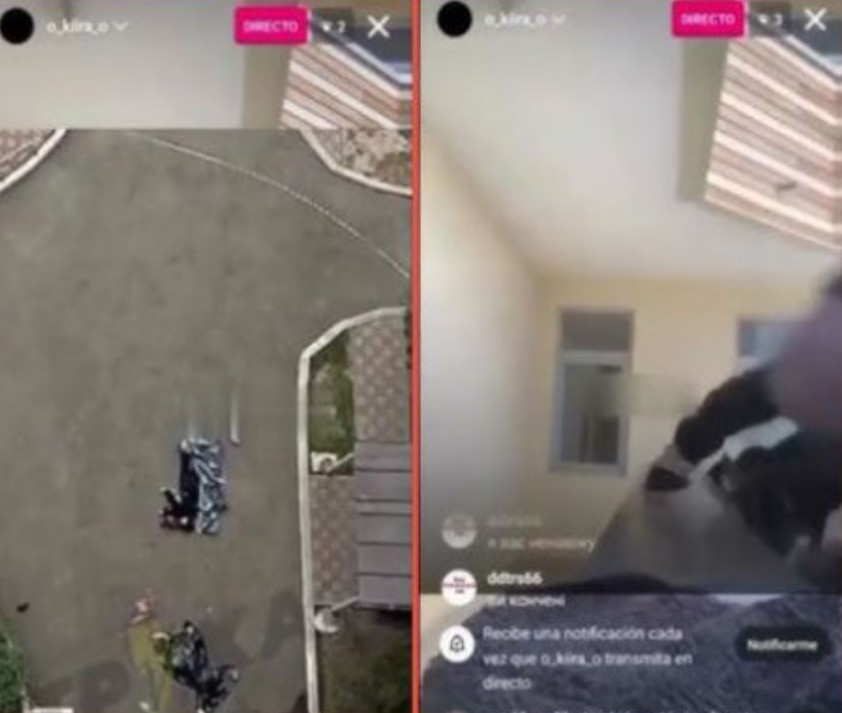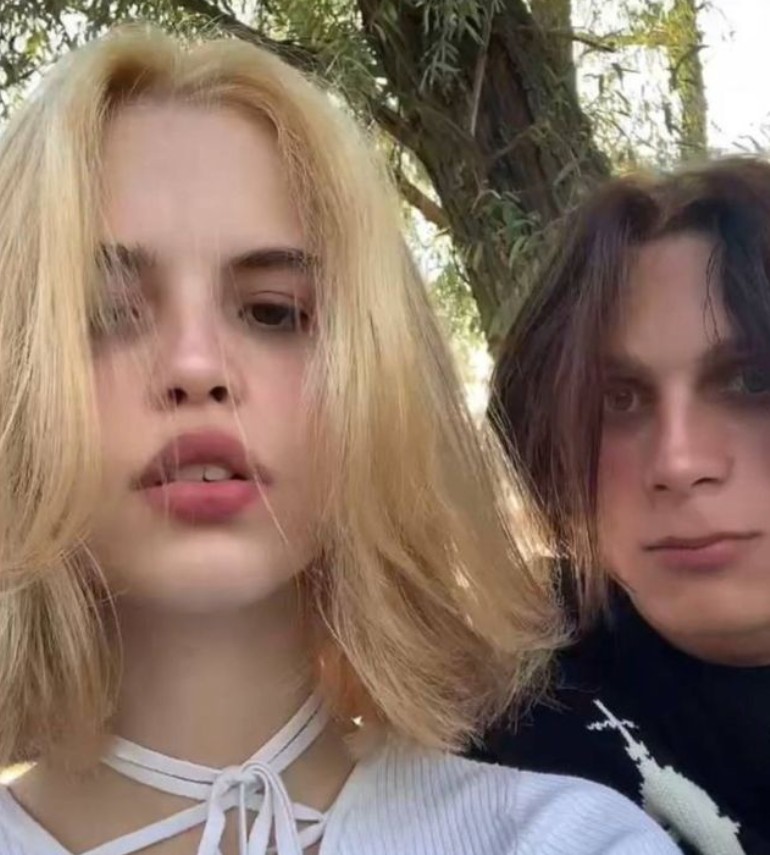In a deeply distressing event that stunned social media users around the world, a video surfaced showing a young couple identified as Vika and Vova jumping to their deaths from the top of a high-rise building. The footage, later confirmed to depict a real double suicide, quickly went viral, sparking an intense wave of grief, debate, and urgent dialogue about mental health, depression, and youth suicide.

Viewers who encountered the now-infamous “Vika and Vova jump video” were met with overwhelming emotion. Some watched in horror, others questioned its authenticity, while many demanded answers. Over time, as the couple’s identities were confirmed and more details came to light, the narrative shifted from sensationalism to sympathy. The tragedy of Vika and Vova served as a painful reminder of how silent struggles with depression can escalate to fatal ends if left unaddressed. Their story now serves as a call to action on mental health awareness, particularly among the youth.
Contents
Who Were Vika and Vova?
Vika and Vova were a young couple believed to be in their late teens or early twenties. According to reports and accounts shared by friends on social media, Vika was known as a kind and quiet girl who had a passion for photography and poetry. Vova, her boyfriend, was described as intelligent but introverted, often keeping to himself even in group settings. The two reportedly met during school and quickly bonded over their shared interests and emotional outlook on life.

Their relationship was viewed by friends as intense and deeply emotional. Photos and videos shared on their social profiles painted a picture of two individuals who found solace in one another amid a world they often felt disconnected from. However, close acquaintances also noted signs of emotional fragility and detachment, raising questions about whether their emotional dependence may have masked more serious mental health issues.
While there were no public reports of clinical diagnoses, some now speculate that both individuals may have been suffering from undiagnosed depression. Their social media activity in the days leading up to their deaths included somber quotes, abstract images of isolation, and cryptic captions that in hindsight hinted at inner turmoil.
The Video and What It Showed
The video, which came to be known as the “Vika and Vova jump video,” reportedly first appeared on messaging platforms before spreading across social media sites. Though graphic clips were swiftly removed from most major platforms due to their disturbing nature, some segments continue to circulate in underground forums.
The footage, believed to have been captured from a nearby building or drone, showed the couple standing on the edge of a tall residential structure. They embraced each other for a brief moment, seemingly saying their final words. Then, without hesitation, they leapt together into the air, vanishing from the frame before the video abruptly cut off.
The disturbing clip ignited a digital wildfire. Many expressed sorrow and disbelief, while others criticized the unethical sharing of such graphic content. Despite widespread calls for the video’s removal, it continued to resurface, exposing more and more people to the traumatic final moments of two young lives.
The Aftermath: Confirmation and Public Response
Local authorities confirmed the incident shortly after the video emerged. Police arrived on the scene and discovered two young bodies at the foot of the building, later identifying them as Vika and Vova based on documents found nearby. Investigators ruled the deaths a double suicide and recovered handwritten notes addressed to their families and friends.

The notes reportedly expressed a shared sense of despair and hopelessness. Vika wrote about her prolonged battle with sadness and feeling invisible to the world. Vova’s letter, while similarly melancholic, expressed gratitude to Vika for being the only person who understood him. Their messages painted a grim portrait of mental suffering that had gone unnoticed.
The public response was swift and emotional. Makeshift memorials were set up near the building where the incident took place. Online, thousands of tributes poured in from strangers who were moved by the story. Artists drew sketches of the couple in peaceful embrace, while others created videos pleading for stronger mental health awareness campaigns.
At the same time, a fierce debate emerged. Critics lambasted the spread of the video, calling it exploitative and traumatic. Others argued that the footage, though painful, served as a wake-up call to recognize the real consequences of untreated depression.
Depression and Youth Mental Health
The tragic deaths of Vika and Vova reflect a broader mental health crisis among young people. According to the World Health Organization, depression is one of the leading causes of illness and disability among adolescents, with suicide ranked as the fourth leading cause of death among 15 to 19-year-olds globally.
Young people are particularly vulnerable to mental health challenges due to rapid changes in identity, societal pressure, and often a lack of emotional support. For some, like Vika and Vova, depression can feel like an unescapable void especially if they believe no one understands them or offers meaningful help.
In cases of shared depression, couples may develop what psychologists call “folie à deux,” or shared delusional disorder, where mutual emotional reinforcement leads to dangerous behaviors. It’s possible that Vika and Vova, in their deep bond and isolation, saw suicide as a shared escape.
Warning signs of suicidal ideation often include withdrawal from social activities, changes in sleeping patterns, expressions of hopelessness, and giving away personal possessions. Sadly, these signs are frequently overlooked or misinterpreted especially when youth conceal their struggles behind digital filters and curated posts.
The Internet’s Role: Viral Tragedy or Cry for Help?
The virality of the “Vika and Vova jump video” has reignited conversations about the internet’s dual-edged power. On one hand, the rapid dissemination of such footage can retraumatize viewers and disrespect the deceased’s dignity. On the other, it can prompt society to confront uncomfortable realities.
Some viewers were inspired to share their own stories of depression or times they felt close to the edge, turning the comment sections into spaces of solidarity and empathy. Mental health advocates seized the moment to promote suicide prevention hotlines, therapy access, and emotional literacy.
However, not all reactions were empathetic. A small segment of internet users mocked or trivialized the couple’s deaths, exposing the internet’s darker underbelly. This sparked calls for stricter content moderation and improved reporting tools to prevent future tragedies from being exploited for clicks or shock value.
Lessons and Legacy
As painful as Vika and Vova’s story is, their deaths have already left a lasting impact. Mental health professionals, schools, and advocacy groups have used the incident to amplify discussions about youth well-being. Their story is now a case study in how easily the signs of depression can be missed even in plain sight.
Some communities have introduced peer-led mental health workshops in schools and universities, using real-life stories like this to destigmatize emotional vulnerability. Online platforms have also been urged to implement better monitoring tools to flag content hinting at suicide plans.
Though they are gone, Vika and Vova’s memory has become a rallying cry. In art, poetry, and online discussions, they are remembered not only for the pain they carried, but for the awareness they unintentionally created.
The story of Vika and Vova is not just about a tragic leap from a rooftop it’s about two young lives consumed by silent suffering. It is a call to all of us to pay closer attention to those around us, to check in with our friends, to take expressions of sadness seriously, and to challenge the stigma that still surrounds mental illness.
While we cannot undo the heartbreaking decision they made, we can honor their memory by turning pain into purpose. By sharing their story responsibly, by advocating for better mental health systems, and by reminding others they are never truly alone, we ensure that their voices though silenced continue to echo in meaningful change.
If you or someone you know is struggling, please reach out to a mental health professional or contact a suicide prevention hotline. Help is available. You matter.




